Let There Be Light! New Lamps from an Ancient Craft
Guests at evening receptions will be guided by the lights of new lamps, replacing the 1950s-era lamps on the Government House Main Drive/Parade Ground and Northern Path light pole. The original lamps outside Government House were gas-lit and installed in 1850.
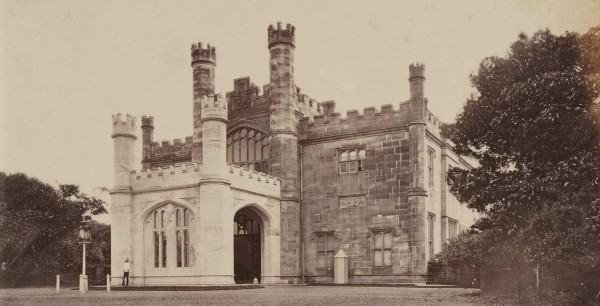
View of Government House, Sydney (with gas light) - photograph John Paine c1875. Caroline Simpson Library & Research Collection, Historic House Trust
The replaced lights of the 1950s had an ‘Acorn’ lampshade and replicating that design proved to be a task harder to achieve than first thought, with initial searches proving fruitless in Australia and the USA where similar lampshades illuminate the streets around the White House in Washington DC.
Discussions with the Sydney Harbour Bridge team, who were also replacing light fittings, turned up a bespoke glassmaker, Canberra Glassworks, one of the few glassworks in the country using the traditional method of glassblowing.
From a fitting sent to them, Canberra Glassworks made a mould and created one fitting.
Of the early stage of the design process, Glassmaker Jacqueline Knight remarked:
“I am interested to know how the glass will look once it is cold-worked. We needed a team of 6 people to make these as they are quite a large object and ultimately it is a huge operation. We had to make a number of attempts to first of all, burn the mould in, and then try to get a perfect one. On this scale, the glass moved a lot more after it came out of the mould than expected, so we won’t really know how successful we are until it’s cut and cold-worked. We may need a 2nd attempt with some slight adjustments to the mould.”
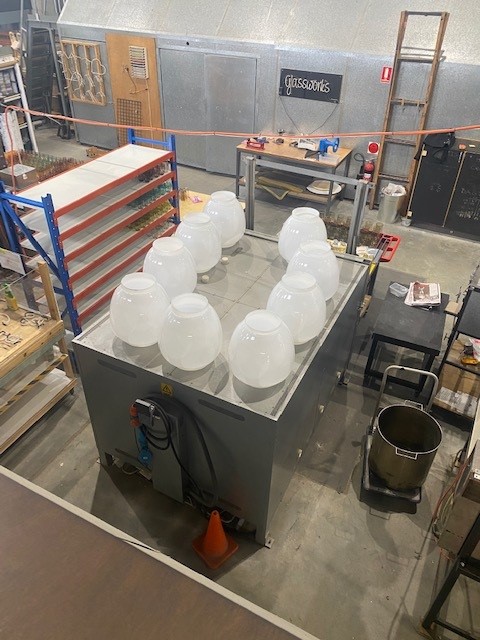
In the final model, Canberra Glassworks used a Soda Lime Furnace Glass, added a layer of opal white coloured glass on the inside of the clear glass that is gathered over the top. Each piece weighs about 12 kg, plus the tops, which weigh an additional 3-4 kg. A technique of cutting called ‘hot popping’, was followed by cold-working by a master cold-worker before the tops were similarly blown.
A team of 6 or 7 glassblowers worked for three full days in the hotshop making the main body of the lamps with 3-4 cold-workers cutting, grinding and linishing the pieces for a further 4-5 full days.
For the tops, a team of 2 glassblowers in the hotshop work for 1.5 – 2 days with the same number of cold-workers cutting, grinding, linishing and drilling the tops.
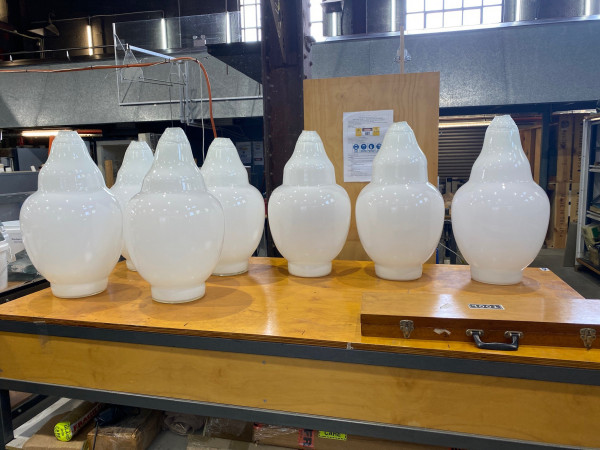
Over a long process, which took more than a year of exacting glassblowing with a number of modifications to replicate the shape, Government House now has a total of six beautiful lampshades in place on the Main Drive.
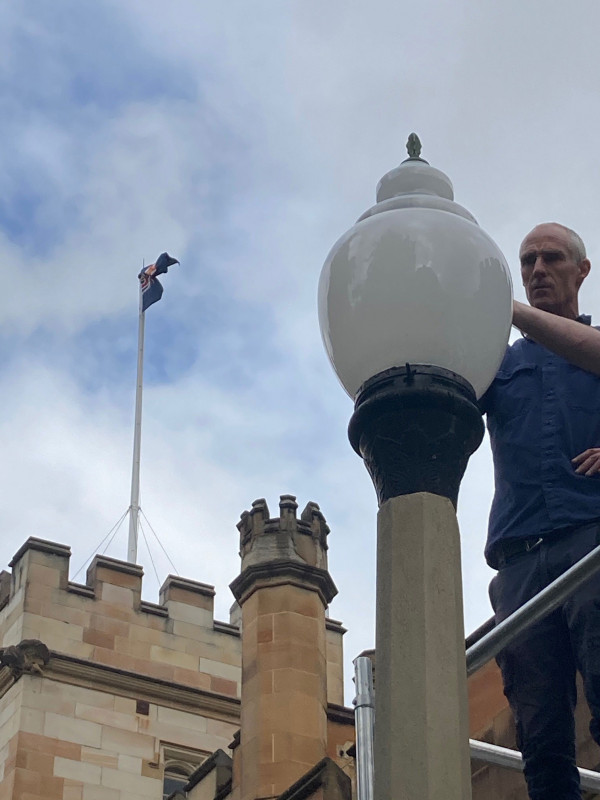
An additional eight lampshades will light the way to Government House from the Parade Ground and Northern Pathway.
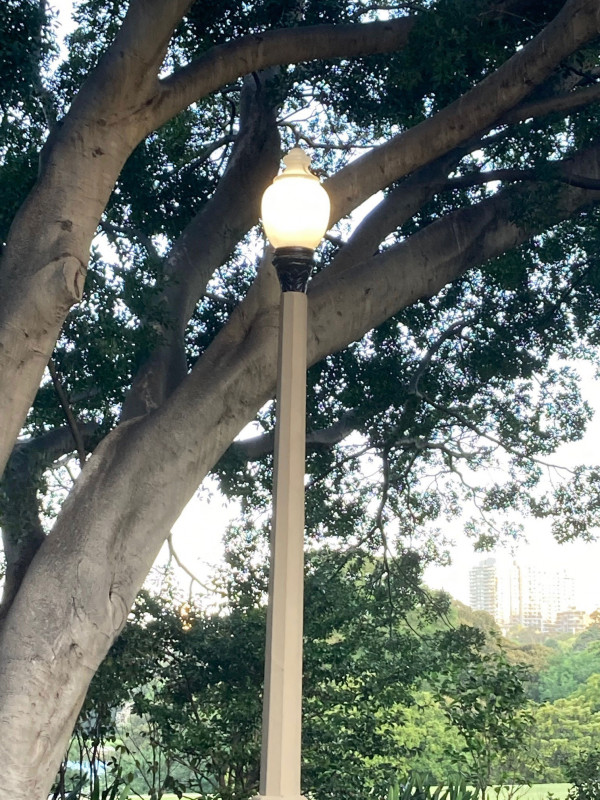
The Historic Craft of Glassmaking
Glassmaking is one of the oldest and most mysterious crafts of civilisation. Naturally occurring volcanic glass produced by the cooling of lava flows (obsidian) had been used by many ancient societies for making sharp cutting tools. Due to the limited numbers of areas in which obsidian was found it was extensively traded.
The Roman historian Pliny attributed the origin of glassmaking to Phoenician sailors who made a fire on a beach over which to cook a meal. The sand beneath the fire melted and ran in a liquid stream that later cooled and hardened into glass. At its basic structure, glass is made from pure silica.
It is believed that the first true glass was made in coastal Syria, Mesopotamia or ancient Egypt around 3500 BC. The ability to make glass developed over a long period of time through experimentation and it is thought that other high heat industries, including ceramics and metalworking, could have inspired early glassmakers.
Archaeological finds of the late Bronze Age in Egypt - including highly prized coloured ingots, vessels and beads - indicate development in glassmaking techniques and technology. Glass became the subject of closely guarded secrets.
The discovery of glassblowing - which involves blowing molten glass from a furnace into a bubble to shape it - around 1st century BC was a major breakthrough, making glass vessels cheaper than pottery. Alexandria in Egypt became an important centre for glass manufacture. In the Middle Ages, glassmaking reached its zenith with the making of stained glass for churches and cathedrals.
It would take the Industrial Revolution to unlock glassmaking’s chemical secrets and enable mass manufacture of this ancient art.
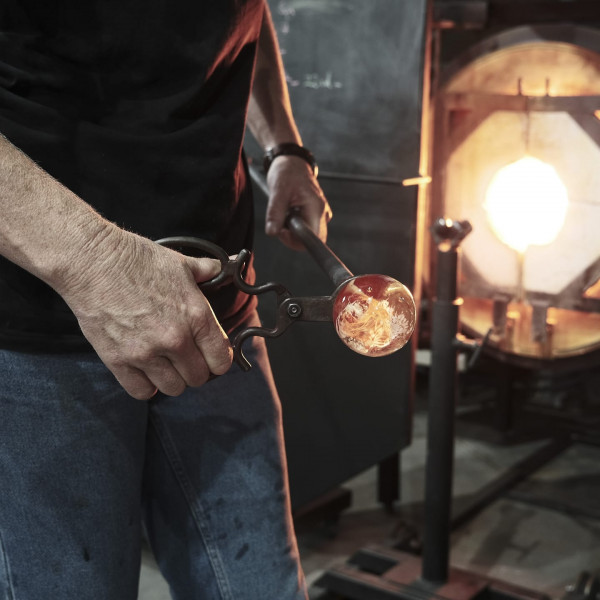
Sources: